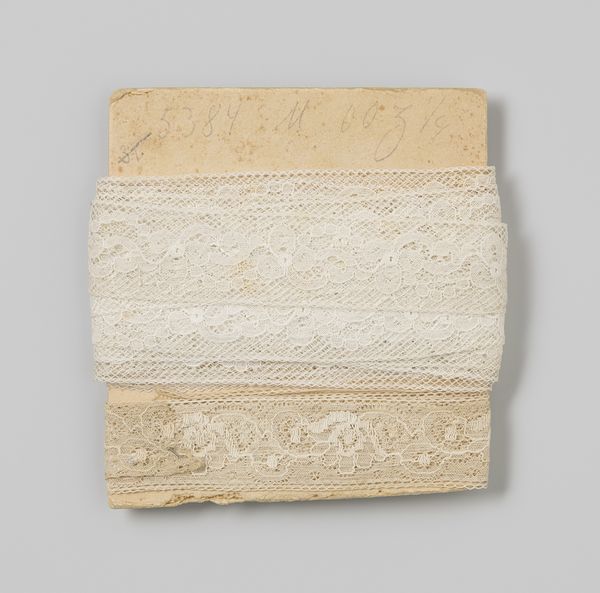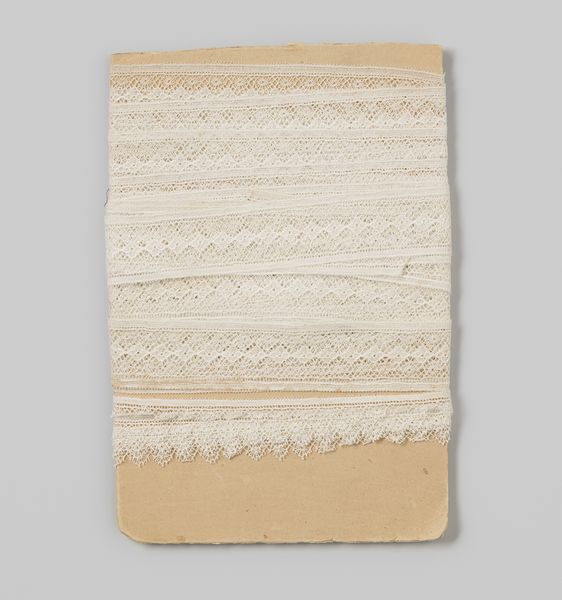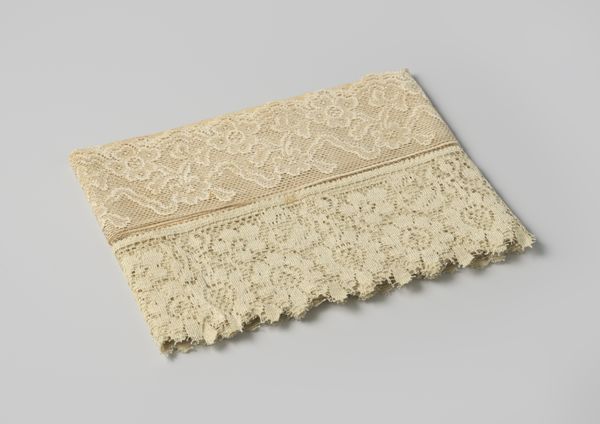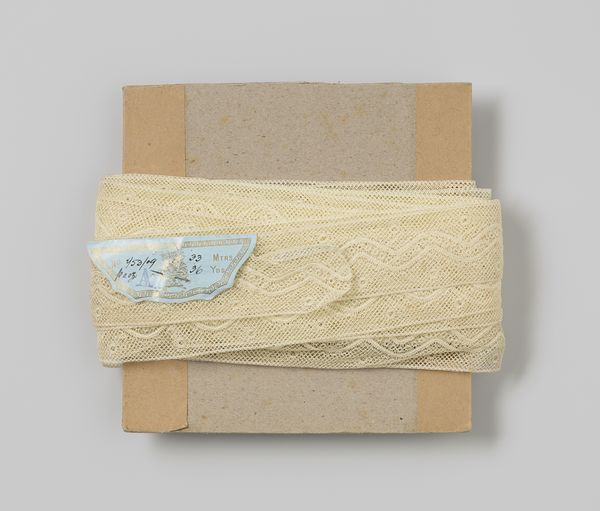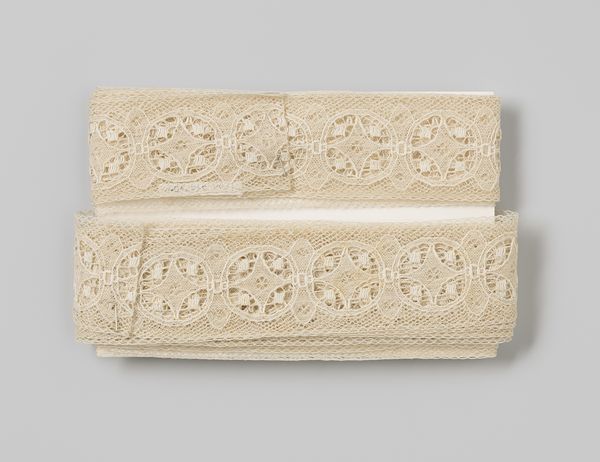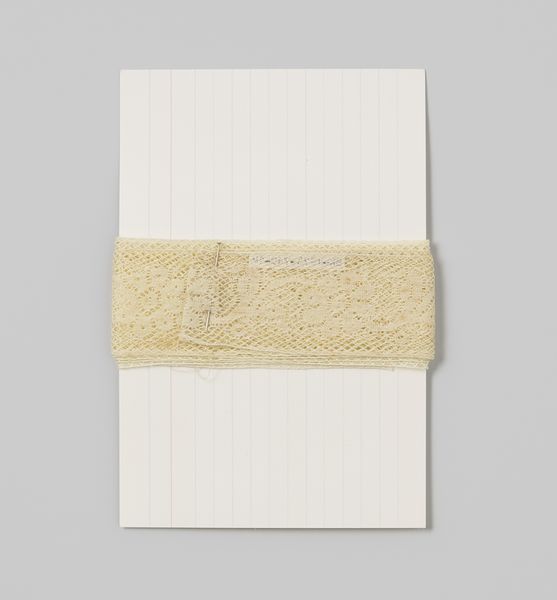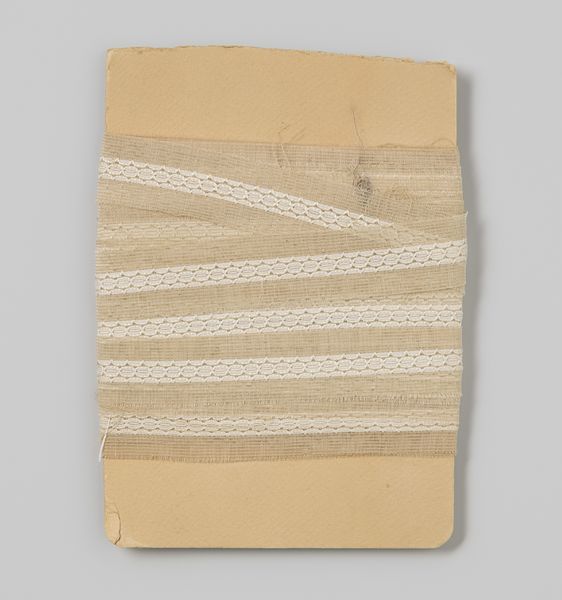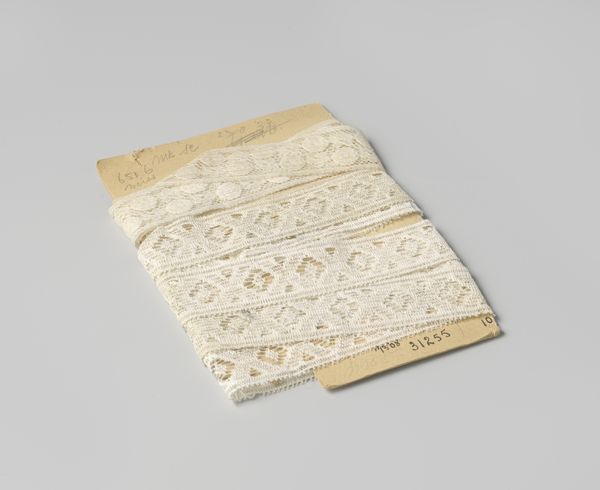
Lint van kant, geschulpt en gepicoteerd, met bloemdecoratie c. 1920
0:00
0:00
gustavschnitzler
Rijksmuseum
textile
#
textile
#
decorative-art
Dimensions: width 4.5 cm, length 15.2 cm, width 10 cm
Copyright: Rijks Museum: Open Domain
Editor: Here we have "Lint van kant, geschulpt en gepicoteerd, met bloemdecoratie," a piece of lace from around 1920, housed in the Rijksmuseum. I find the intricate floral design quite beautiful, but also very delicate. As an art object in a museum, divorced from its original purpose, what can we say about the cultural role this textile played in society, and how it's viewed today? Curator: That’s a great starting point. This lace ribbon represents more than just a decorative element; it embodies social status, skilled labor, and shifting notions of femininity during the early 20th century. The Industrial Revolution had begun to make lace production more accessible, but handmade lace, like this, retained its exclusive appeal. Who was wearing it and how did they use it? How did these displays impact how different classes interacted and saw themselves? Editor: So, its value stemmed from being both aesthetically pleasing and representative of a certain level of social standing? Was it also seen as a reflection of the wearer's character? Curator: Absolutely. Consider the symbolism embedded within the floral motifs. Flowers often carried specific meanings within Victorian and Edwardian society, conveying messages of love, fidelity, or remembrance. Therefore, choosing this specific lace signified intentional communication and social awareness. The very act of adorning oneself with such a piece can be considered an expression of identity, crafted within specific cultural and economic frameworks. The visibility of such artistry was critical to creating social distinctions. Editor: That is insightful, viewing it not just as material, but as an act of social dialogue. It’s easy to overlook the power of something that now appears so quaint. Curator: Indeed, its current display within a museum setting also influences its meaning. The lace is transformed from a functional adornment into a preserved artifact. The museum bestows upon it a different type of value—historical and artistic rather than purely social or economic. Editor: So, our understanding of art isn’t just about what it is, but about how society interacts with and ascribes meaning to the art. Thank you. Curator: Exactly! Thinking about these broader influences allows a deeper understanding of art history, one that isn’t simply about aesthetics, but one centered around humanity.
Comments
No comments
Be the first to comment and join the conversation on the ultimate creative platform.
